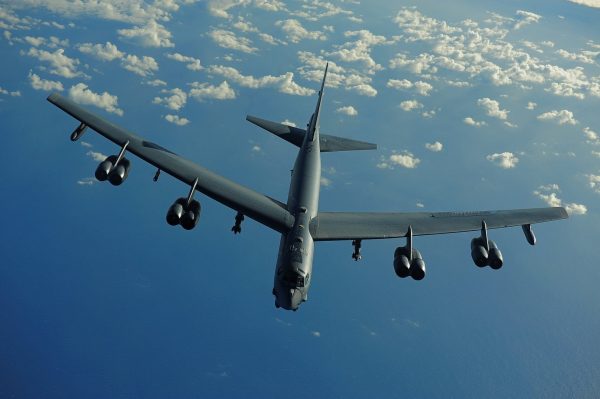The B-52 aircraft has been operated by the United States Air Force (USAF) since the 1950s, yet the aircraft’s deployment to Europe shows its versatility and enduring relevance in modern warfare. The presence of these bombers in Europe enhances the operational readiness and interoperability of NATO forces but also serves as a strategic signal to potential adversaries about the alliance’s capabilities and resolve.
The B-52’s technological advantages include stealth, sensor integration, and precision targeting. These capabilities make it particularly effective in various operational scenarios, such as strategic attack, close-air support, air interdiction, offensive counter-air, and maritime operations. The Pentagon’s $48.6 billion plan calls for the B-52 to receive upgrades to extend its service life until 2060.
The B-52 Stratofortress has proven its worth time and again, and with the planned upgrades, it is expected to continue serving as a critical part of the U.S. defense strategy well into the 21st century. As emerging threats and technological advancements evolve, so will the B-52, ensuring its relevance and effectiveness in the face of future challenges.
Comparison between the US B-52 Stratofortress and the Russia Tu-95 Bear
The B-52 Stratofortress and the Tu-95 Bear, both strategic bombers, have been the backbone of the U.S. and Russian air forces respectively for several decades. Here’s a comparative analysis of the two:
Design and Development: The B-52 is an eight-engine bomber, while the Tu-95 is a four-engine turboprop-powered strategic bomber and missile platform. The Tu-95, also known as the Bear, is one of the oldest designs still in service with the Russian military and is the only propeller-powered bomber in service in the world today. The B-52, on the other hand, has often been used as a heavy bomber.
Operational Capabilities: The B-52 has been significantly upgraded over the years, with plans for further enhancements to extend its service life until 2060. The Tu-95 has also been significantly upgraded, beyond its original capability to drop unguided bombs.
Payload and Range: Both aircraft can cover great distances while carrying a hefty payload. The B-52 can carry a variety of weapons and has a maximum unrefueled range of more than 8,800 miles. The Tu-95, on the other hand, has been upgraded to carry the latest X-101 cruise missiles.
Noise Levels: The Tu-95 is one of the loudest military aircraft. This is because the tips of the propeller blades move faster than the speed of sound. The B-52, while not as loud, is still a noticeable presence in the sky.
While both the B-52 and the Tu-95 have their unique strengths and have been upgraded over the years to stay relevant, they serve slightly different roles within their respective air forces. The B-52 is often used as a heavy bomber.
The B-52 aircraft has been operated by the United States Air Force (USAF) since the 1950s, yet the aircraft’s deployment to Europe shows its versatility and enduring relevance in modern warfare. The presence of these bombers in Europe enhances the operational readiness and interoperability of NATO forces but also serves as a strategic signal to potential adversaries about the alliance’s capabilities and resolve.
The B-52’s technological advantages include stealth, sensor integration, and precision targeting. These capabilities make it particularly effective in various operational scenarios, such as strategic attack, close-air support, air interdiction, offensive counter-air, and maritime operations. The Pentagon’s $48.6 billion plan calls for the B-52 to receive upgrades to extend its service life until 2060.
The B-52 Stratofortress has proven its worth time and again, and with the planned upgrades, it is expected to continue serving as a critical part of the U.S. defense strategy well into the 21st century. As emerging threats and technological advancements evolve, so will the B-52, ensuring its relevance and effectiveness in the face of future challenges.
Comparison between the US B-52 Stratofortress and the Russia Tu-95 Bear
The B-52 Stratofortress and the Tu-95 Bear, both strategic bombers, have been the backbone of the U.S. and Russian air forces respectively for several decades. Here’s a comparative analysis of the two:
Design and Development: The B-52 is an eight-engine bomber, while the Tu-95 is a four-engine turboprop-powered strategic bomber and missile platform. The Tu-95, also known as the Bear, is one of the oldest designs still in service with the Russian military and is the only propeller-powered bomber in service in the world today. The B-52, on the other hand, has often been used as a heavy bomber.
Operational Capabilities: The B-52 has been significantly upgraded over the years, with plans for further enhancements to extend its service life until 2060. The Tu-95 has also been significantly upgraded, beyond its original capability to drop unguided bombs.
Payload and Range: Both aircraft can cover great distances while carrying a hefty payload. The B-52 can carry a variety of weapons and has a maximum unrefueled range of more than 8,800 miles. The Tu-95, on the other hand, has been upgraded to carry the latest X-101 cruise missiles.
Noise Levels: The Tu-95 is one of the loudest military aircraft. This is because the tips of the propeller blades move faster than the speed of sound. The B-52, while not as loud, is still a noticeable presence in the sky.
While both the B-52 and the Tu-95 have their unique strengths and have been upgraded over the years to stay relevant, they serve slightly different roles within their respective air forces. The B-52 is often used as a heavy bomber.



